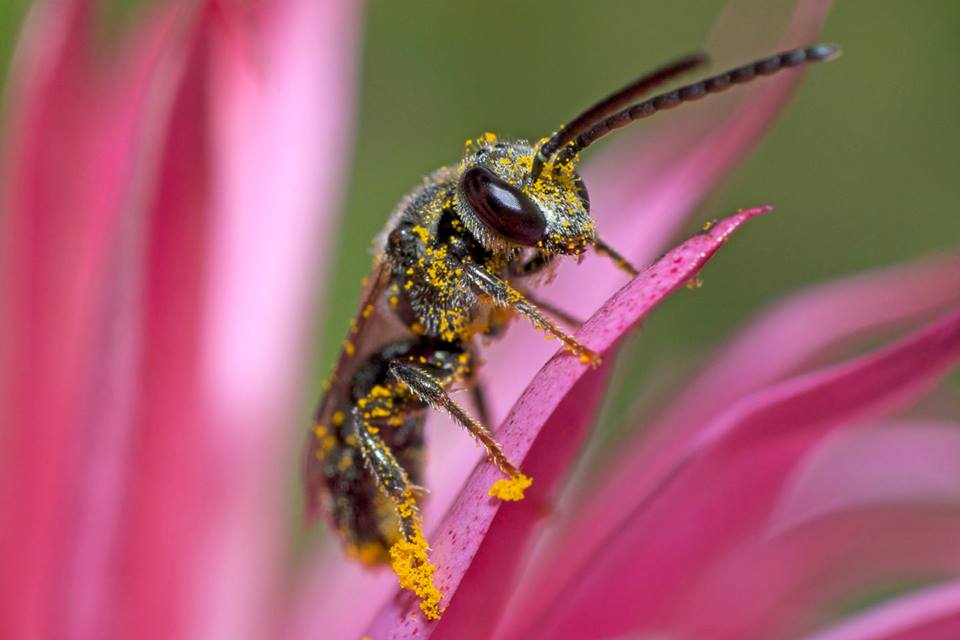Sustainability Practices
- 2020-04-03
- By mkirk
- Posted in The Garden Buzz
By Donnetta Wilhelm, Colorado Master Gardener
Merriam-Webster Dictionary defines sustainability as a method of using a resource so that the resource is not depleted or permanently damaged. Sustainable landscapes strive to combine the natural with the man-made to create a healthy balance between people and the environment for the benefit of both.

The number of sustainability practices varies depending on the education resource used, however, below are the most common and were given priority in the creation of the Lima Plaza Pollinator Garden:
WATER CONSERVATION is here to stay and should be practiced in every landscape. Conserving water is achieved in a variety of ways. Eliminating 2,300 square feet of turf, using xeriscape and native plants, mulching and using drip irrigation were all water conservation practices implemented in the garden.
NATIVE PLANTS are adapted to the drought-challenged climate and require less water because they fit the conditions of the soil and the environment. Native plants often require no fertilization and are more resistant to disease and pests. They are also appropriate to the cultural landscape and require less maintenance.

CREATE A WILDLIFE HABITAT so all plants serve a purpose in the landscape. Plants support pollinators and local wildlife by providing food and shelter. Select a wide variety of plants that will draw a broad range of pollinators all season and help sustain them through the winter.
RIGHT PLANT, RIGHT PLACE is a landscape practice to match a plant to the appropriate conditions. Selecting diverse plants that are adapted to the soil, sun/shade, water availability, existing hardscapes and overall growing conditions reduces water requirements, chemicals and maintenance. This also helps to create a more natural looking landscape.
FEED THE SOIL because it is the foundation of plant success. Good soil increases water retention and nutrients. Add organic matter if needed, however, be aware of over-amending. Native plants, by nature, thrive in native soils. Use organic mulches to help with soil temperature, retain moisture, assist with erosion and inhibit weed growth. Decomposed mulch feeds the soil which improves plant health and dramatically reduces the need for fertilization.
MANAGE PESTS RESPONSIBLY using IPM (Integrated Pest Management) which is an environmentally sensitive approach. Understand the insects and diseases and their level of damage to a plant or another insect before treating. Check the landscape each week to aid in early detection of problems.
There are additional sustainability practices that are appropriate for homeowners to consider:
RECYCLE leaves, clippings, conifer needles and other trimmings into mulch or compost.
CONSERVE ENERGY through proper landscaping that helps lower energy costs. With strategically planted trees, shrubs, vines and man-made structures, the climate can be modified to protect from winter winds, shade from summer sun and even help with protection in wildfire areas.
EDIBLE LANDSCAPES combine fruit and nut trees, berry bushes, vegetables, herbs and edible flowers into a design that is aesthetically beautiful and beneficial to both humans and wildlife.
REMOVE INVASIVES to help protect the ecosystem from unwanted plants that are aggressive and threaten native plants and animals. More information on sustainability is available on CSU Fact Sheet 7.243. https://extension.colostate.edu/topic-areas/yard-garden/sustainable-landscaping-7-243/
Horticulture Resources
- Garden Buzz Archives
- CSU Extension Resources
- Colorado Master Gardener Program
- Foothills to Plains Native Plant Master Program
- Native Bee Watch Community Science Program
- The Co-Hort Blog
- PlantTalk Colorado
- Soil Testing
- Plant Select
- Emerald Ash Borer
- Japanese Beetle
- Colorado State Forest Service
- Ask an Expert


